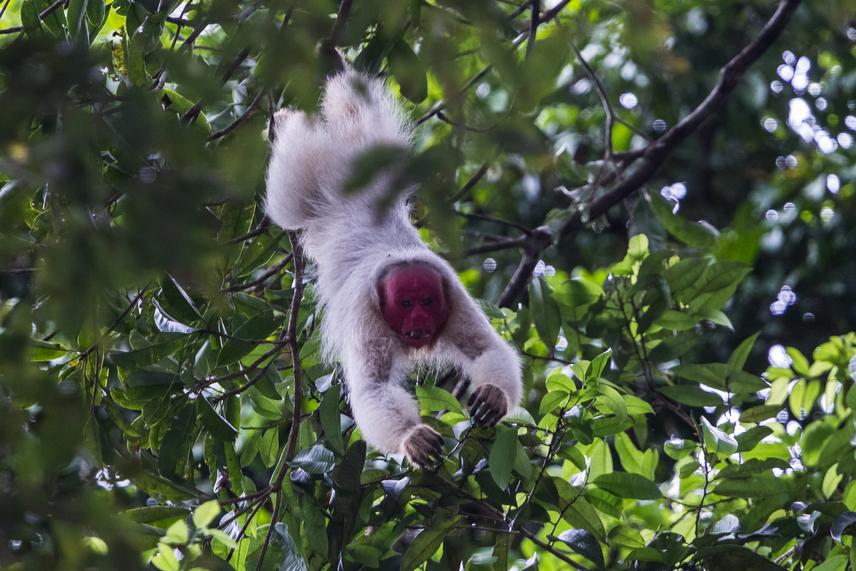Felipe Ennes Silva
Other projects
19 Mar 2014
Behavioral Ecology and Conservation of White Uakaries (Cacajao calvus calvus) in Amazon
11 Oct 2017
Habitat Suitability, Geographic Distribution and Conservation of the Bald-Headed Uakaris (Cacajao calvus ssp.) in the Amazon Rainforest, Brazil
This project is built upon the main results and gaps identified in the last RSG projects. In the 1st RSG round, we identified tree species important to the uakaris’ ecology and that are targets of wood management in a protected area in the Brazilian Amazonia.

The recently described Cacajao amuna, the white uakaris from the Tarauacá River, Brazil.
In the 2nd RSG we delimitated the geographic distribution of each bald-headed uakari species, estimated their habitat suitability, and identify the impact of climate change and deforestation in the uakaris’ habitat. In this project, we will combine field surveys and genomics to investigate the population status of each bald-headed uakari species.
Firstly, we will collect data using the distance sampling method and will integrate this information into a dataset of 292 records of uakaris in 56 trails totalling 13,345.25 km of trails in the Peruvian and Brazilian Amazonia. Secondly, we will use whole-genome sequencing to estimate the effective population size and investigate the demographic history of different uakari populations.
Finally, we will model the impact of future scenarios of habitat loss in the population trends and integrate this information in the conservation assessment of bald-headed uakaris.